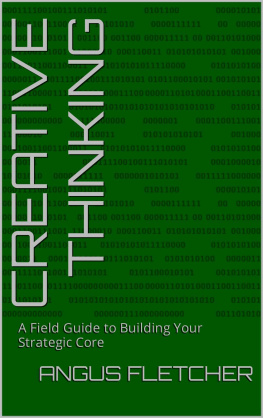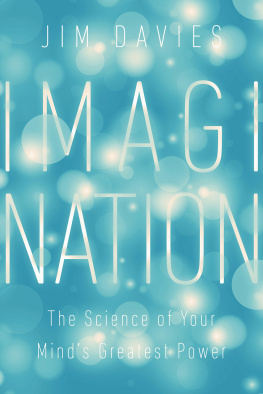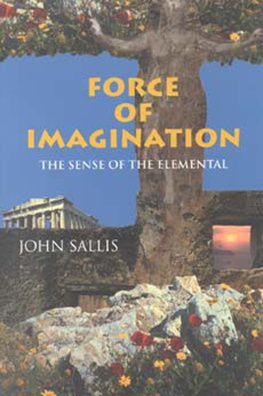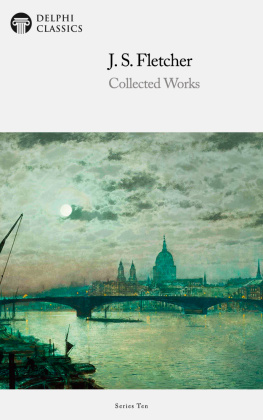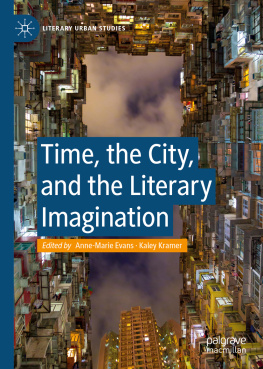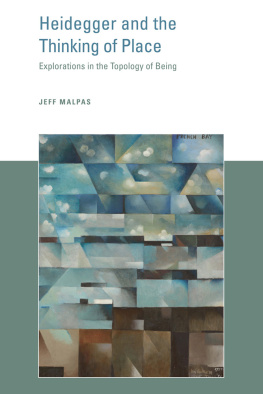The Topological Imagination
THE TOPOLOGICAL IMAGINATION
Spheres, Edges, and Islands
ANGUS FLETCHER

Harvard University Press
Cambridge, Massachusetts, and London, England
2016
Copyright 2016 by the President and Fellows of Harvard College
All rights reserved
Jacket photo: Grigorev_Vladimir/Thinkstock/Getty Images
Jacket design: Jill Breitbarth
ISBN 978-0-674-96886-8 (EPUB)
The Library of Congress has catalogued the print edition of this book as follows:
Fletcher, Angus, 1930 author.
The topological imagination: spheres, edges, and islands / Angus Fletcher.
pages cm
Includes bibliographical references and index.
ISBN 978-0-674-50456-1
1. Topology. 2. MathematicsPhilosophy. 3. Art and science. 4. Knowledge, Theory of. I. Title.
QA611.F495 2016
514dc23 2015032348
To Michelle
Contents
If we humans are obsessed by the global, it is not without causeour successful commerce joins with interlocking, essentially tribal wars whose bitter results are more than mind can tolerateand yet at this moment in history much of our technology implies greater and greater cooperation among rival interests. The United States manufactures and exports weapons, but we also improve and send agricultural produce and other aid all over the world, contradictory actions prompting me to wonder about the right choice of expository method, if in some measure I am to address the global system in coherent global terms. Perhaps for me an informal style is appropriate, and it is not so strange to be writing a personal, ethically focused essay about an impersonal machinery of hyperactive business, war, and power. The task then becomes to describe one sort of unfamiliar consciousness, a seriously neglected kind of thinking, if the world today seems too large for comprehension or too small for analysis, and yet that foray into the unknown charts my conjectural voyage.
It is not clear how, reasonably, if we are to diminish global anxiety, we might stabilize the objects of our thought, or putting it another way, how should we humans estimate the quality versus the quantity of human consciousness? Semantic issues play a major role here. Perhaps we err in thinking that the words of ordinary language and the numbers employed in scientific measurement are equivalent to an approximate degree, as if the word three were radically identical to the number 3, and convenience alone gives rise to a strictly mathematical language. These may seem odd and unnecessary questions about language in the broadest sense, but they relate deeply to our human subjectivity. I, for example, am fascinated by the horizon afforded by a geometric sphere, and with such interests in mind I have gathered my conjectures around one center, the topological imagination, a gathering grounded in a special mathematical procedure: topology. In one sense this volume has been a shared meditation on our human home, the sphere itself, in all its dreams and divisions. In another sense it has simply been a wandering personal story about looking, listening and reading as a way of life shaped by the arts of two different languages.
To begin with the mathematics, we know that our human species lives on the surface of a large spherical surface, an irregular one and yet a manifold not totally unlike the perfect sphere a geometer would recognize. The ideal geometrical sphere has two sides (inside and outside) and no edges. Our planet has several interconnected layers of insulation, such as the atmosphere and stratosphere, lithosphere and hydrosphere, while many of its natural surface features create de facto edges, giving to our home in space an extremely complex global form. We are not supposed to have any edges, but we see edges everywhere, and islands of virtually spherical isolation are scattered everywhere on the planet, and magically they, too, seem to violate ideal uniformity.
My essay explores different ways of seeing the terrestrial biosphere, a living space revealed by what is called topology, where the placement of our lives is an imagined quality of our existence. That sounds remarkably abstract, when speaking of custom and human life, but there is no other way, for the mathematics enforces the problem of mixing and matching some patently realistic situations with some highly abstracted conceptions, unavoidably if we are to obey a virtually dramatic probability. We are like the two lovers in a famous lyric by the seventeenth-century poet Andrew Marvell, who imagined the origins of all yearningHad we but world enough and time, / This coyness, lady, were no crime. We dream, for we do not know how to participate in all four dimensions at once. The spherical itself, as the mind intuits its almost tactile quality, presents to us an impression of continuous change, and because the determining shape is that of a round ball, we live, usually without quite knowing it, in a state of continuous flux. It is said that Heraclitus the ancient Greek philosopher observed, everything flows, and yet there is still some kind of order within the flow, an order coming precisely from the constant presence, everywhere, of differentiating edges between different things and different events and scenes. If our sphere could talk, it would say, I am always looking for useful edges and trying to get rid of useless ones. Good edges, clear like longitude and latitude, will show me how to navigate on an otherwise boundless surface.
In a Heraclitan sense topology is a way of seeing and understanding the forms of Marvells world enough and time, as if they were constantly in motion, as if the mind could actually touch their motion, making bodily and hence physical contact with its abstract contours, by recognizing the soul of what is materially real, no matter how much the outward appearances of things may alter over time.
Hidden in the grand rhetoric of what a modern critic might call the dramatic monologue of the poem, To his Coy Mistress confronts a series of puzzles: how indeed could we measure the magnitude of world and time, and could humans ever know what is enough of either? How is the turbulence of life and its understanding to be kept smooth enough to be tolerable? At what ethical price can the world avoid braking its tumult into radical fragmentation? How, finally, can life have a flowing continuity? These are ancient yet no less modern questions, in their paradoxical mode that my essay pursues throughout, for we have made an accelerated world threatened by temporal discontinuities. Topology, we shall see, speaks directly to this enigmatic continuous phasing of long-term human survival. More than ever, without becoming regressive troglodytes, we must achieve order during the rise of radical and widespread Mutability, as four hundred years ago the Elizabethan poet, Edmund Spenser, called it, when the West had already entered the dawn of modern science and modern politics. Our question once again will have to be: how shall we think of permanence in the midst of fundamental change? The West went through a frightening hundred years of crisis, the seventeenth century, before it could begin to answer that question in abstract terms. It was only a beginning, however, and the Enlightenment period was to see revolutionary developments.
My starting point will therefore be two major mathematical discoveries made in the eighteenth century by a remarkable mathematician, Leonhard Euler, and I shall be returning many times to his thought, without claiming to analyze later development in mathematical fields. As a scholar working with literature and the arts my competence in mathematics is, of course, limited, and I am chiefly interested in the elective affinity, to extend Goethes phrase, through broad analogies linking topology with artistic endeavor. Furthermore, the two inaugural eighteenth-century moments have implications for thought


